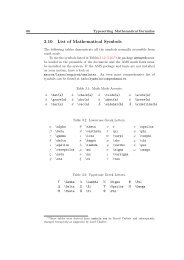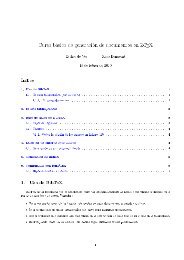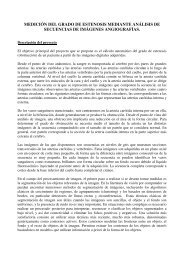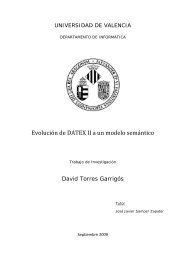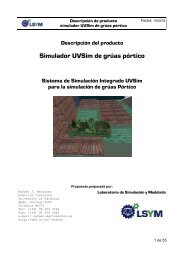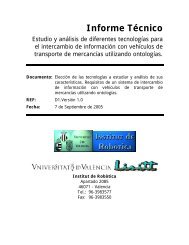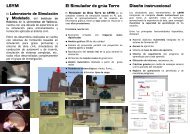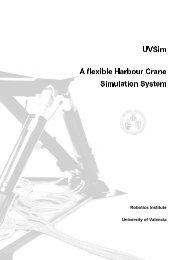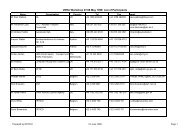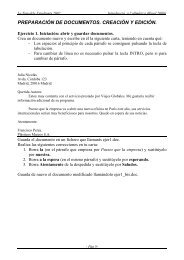Matemáticas para la Computación
Matemáticas para la Computación
Matemáticas para la Computación
Create successful ePaper yourself
Turn your PDF publications into a flip-book with our unique Google optimized e-Paper software.
<strong>Matemáticas</strong> <strong>para</strong> <strong>la</strong> computaciónDept. d’InformàticaProblemas Universitat de València4. NO RESUELVA LA SIGUIENTE ECUACIÓN DIFEREN-CIAL. Sólo indique, razonadamen te, si es una ecuación diferencialexacta.(3x 2 y + x + y)dx + (x 3 + y 2 + x)dy = 0Ejercicio 67:Contestar a <strong>la</strong>s siguientes cuestiones:1. Compruebe que si <strong>la</strong> función y(x) es solución de <strong>la</strong> ecuación homogéneay ′′ (x) − 6y ′ (x) + 9y(x) = 0y ϕ(x) es solución de <strong>la</strong> ecuación no homogéneay ′′ (x) − 6y ′ (x) + 9y(x) = f(x),entonces φ(x) = y(x) + ϕ(x) también es solución de <strong>la</strong> ecuación nohomogénea.2. Resuelva <strong>la</strong> siguiente ecuación diferencial lineal con coeficientes constantesno homogénea:y ′′ − 6y ′ + 9y = e 2x .Posible ayuda: El polinomio p(t) = t 2 −6t+9 puede factorizarse comop(t) = (t − 3) 2 .3. NO RESUELVA LA SIGUIENTE ECUACIÓN DIFEREN-CIAL. Sólo indique, razonadamente, si es una ecuación diferencialexacta. Indique también si es una ecuación diferencial homogénea.(3x 2 y + x 3 )dx + (x 3 )dy = 0Ejercicio 68:Contestar a <strong>la</strong>s siguientes cuestiones:65



